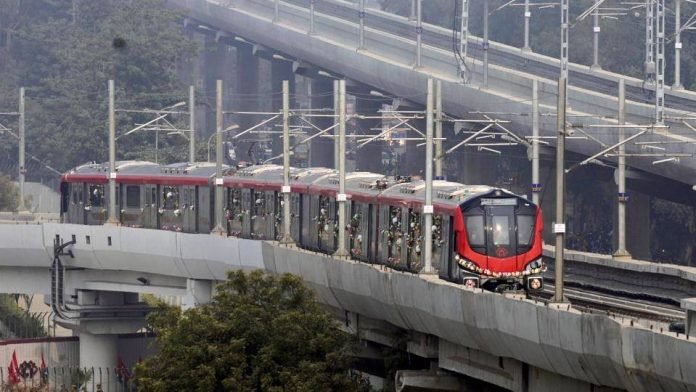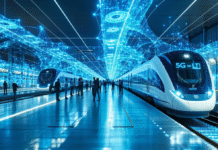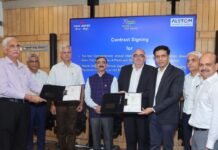Introduction
Lucknow, the capital and largest city of the Indian state of Uttar Pradesh, serves as the administrative headquarters of both the Lucknow district and division. Strategically located near the centre of the state on the northwestern bank of the Gomti River, the city stands at an elevation of approximately 123 meters above sea level. Renowned for its rich cultural heritage, Lucknow has long been recognised as a vibrant centre of North Indian culture, music, poetry, and fine arts.
The city continues to play a vital role in governance, education, commerce, pharmaceuticals, aerospace, technology, design and tourism. During the 18th and 19th centuries, it flourished under the rule of the Nawabs, evolving into a hub of sophistication and artistic expression. The city’s identity is deeply influenced by a synthesis of Mughal, Persian, and British elements.

Solving Urban Challenges: Why Lucknow Needed a Metro System
With a population of approximately 2.8 million as per the 2011 Census, Lucknow stands among the most populous cities in India. The city’s rapid urbanisation and economic expansion increased the pressure on its urban infrastructure, especially its transportation network.
- One of the most critical challenges Lucknow faced was the lack of an efficient public transportation system. The inadequate commuter transportation system in Lucknow was overwhelmed by an upsurge of private automobiles. Motorised two-wheelers and cars make up nearly 90% of all registered vehicles in the city. This overwhelming dependence on personal transport led to traffic congestion, longer commutes, and increased air pollution in the city.
- Recognising the urgent need for a modern, reliable, and eco-friendly transit solution, the introduction of a Metro Rail System was seen as the most viable option to meet the mobility needs of the growing urban population.
To bring this vision to life, the Lucknow Development Authority (LDA) entrusted the Delhi Metro Rail Corporation (DMRC) with the task of preparing a Detailed Project Report (DPR) for the implementation of a Mass Rapid Transit System (MRTS) in Lucknow.

Lucknow Metro: A Step Toward Sustainable Transit
Overview
Lucknow Metro is an urban Mass Rapid Transit System (MRTS) serving Lucknow, the capital city of Uttar Pradesh. The project is being implemented, executed and operated by the Uttar Pradesh Metro Rail Corporation Limited (UPMRCL).
The project’s Phase 1 comprises two Corridors, covering a total length of 33.976 km. Currently the Line 1 of Lucknow Metro is operational while Line 2 is in under implementation stage.
| Corridor | Route | Elevated | Underground | Total Length | Current Status |
| North–South Corridor | CCS Airport- Munshi Pulia | 19.438 km | 3.440 km | 22.878 km | Opertaional |
| East–West Corridor | Lucknow Railway Station– Vasant Kunj | 4.548 km | 6.550 km | 11.098 km | Under-Implementation |
| Total | 23.986 km | 9.990 km | 33.976 km |
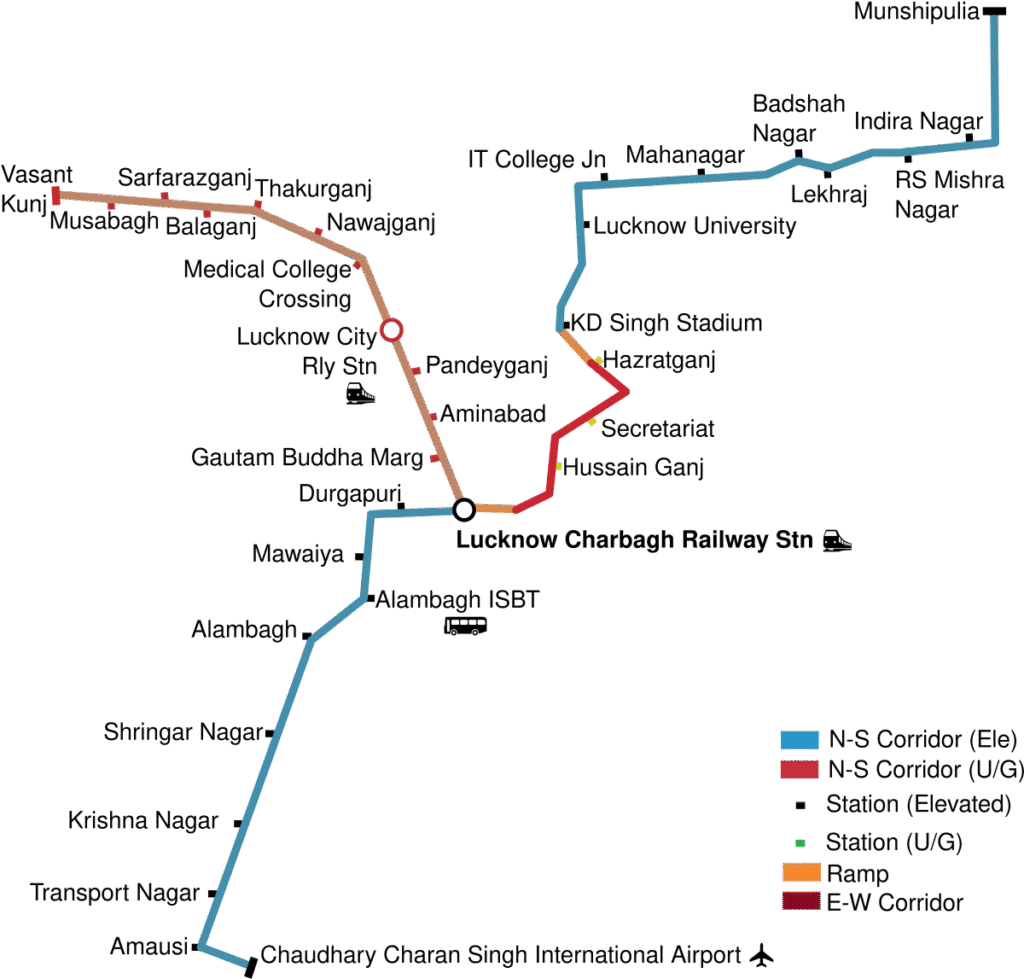
Key Specification
| Speed and Track | Top Speed: 80 kmph |
| Average Speed: 34 kmph | |
| Standard Gauge: 1435 mm | |
| Electrification | 25 kV, 50 Hz AC OHE |
| Signalling | Communication-based Train Control (CBTC) |
| Rolling Stock | 80 coaches (20 trains of 4 cars) supplied by Alstom |
Contractor’s List
| Contract | Contractor / Status |
| Package LKGC-01: Lucknow Metro General Consultant (GC) | Ayesa – KRNA-Aarvee – Geodata JV |
| Package LKDD-01: Lucknow Metro’s Detailed Design Consultant (DDC) | SYSTRA MVA Consulting (India) |
| Package LKCC-01: Construction of viaduct and 8 elevated sections between Transport Nagar – Charbagh section, including extension to Amausi | Larsen & Toubro (L&T) |
| Package LKCC-05: Construction of 2 km elevated & underground section between Amausi – CCS Airport | Sam (India) Builtwell Pvt. Ltd. |
| Package LKCC-06: Construction of 3.44 km twin tunnels and 3 underground stations between Charbagh – KD Singh Babu Stadium | Tata – Gülermak JV |
| Package LKCC-07: Construction of 8.63 km viaduct and 8 elevated stations between KD Singh Babu – Munshipulia | Larsen & Toubro (L&T) |
| Package LKRS-01: 80 Coaches (Rolling Stock) & Signalling System | Alstom Transport India |
| Package LKT-05: Ballastless Tracks | Kalindee Rail Nirman |
| Package LKTS-01: Detailed Topographical Survey of East-West Corridor (Charbagh to Vasant Kunj) including Depot at Hardoi Road | Epitome Geotechnical Services |
| Package LKGS-01: Detailed Geo-Technical Survey of East-West Corridor (Charbagh to Vasant Kunj) including Depot at Hardoi Road for Lucknow | Arun Soil Lab Pvt. Ltd. |
Lucknow Metro’s Operational Route
Currently, Phase 1A of Lucknow Metro, which comprises one corridor, is operational. The North-South Corridor (Line 1) of Lucknow Metro spans 22.878 km between CCS Airport and Munshi Pulia. On September 27, 2014. The Construction on Line 1’s 8.5 km elevated ‘Priority Corridor’, connecting Transport Nagar to Charbagh (Lucknow Railway Station), commenced.
Timeline of Line 1
| Line | Route | Length | Operational Date |
| Line 1 | Transport Nagar – Charbagh | 8.5 km | 5 September 2017 |
| Line 1 | Transport Nagar – Chaudhary Charan Singh International Airport | 2.67 km | 8 March 2019 |
| Line 1 | Charbagh – Munshipulia | 12.6 km | • 8 March 2019 |
Route Details
Line-1: CCS Airport – Munshi Pulia
- Length: 22.878 km
- Type: Elevated (19.438 km with 19 stations) and Underground (4 km with 4 stations)
- Depot: Transport Nagar
- Number of Stations: 23
- Station Names: CCS Airport (underground), Amausi, Transport Nagar, Krishna Nagar, Singar Nagar, Alambagh, Alambagh Bus Station, Mawaiya, Durgapuri, Charbagh Railway Station, Hussain Ganj (underground), Sachivalaya (underground), Hazrat Ganj (underground), K.D. Singh Stadium, Vishwavidyalaya, IT Chauraha, Badshahbagh, Badshah Nagar, Lekhraj Market, Ramsagar Mishra Nagar, Indira Nagar & Munshi Pulia
Lucknow Metro’s Under-Implementation Route
The under-implementation route of Lucknow Metro includes the East-West Corridor (Line 2), which spans 11.165 km from Charbagh to Vasantkunj. Out of 11.165 km the 4.286 km is elevated tracks while the remaining 6.879 km is situated underground.
The Uttar Pradesh Government approved the project in March 2024. The East-West Corridor of Lucknow is expected to be completed within five years.
Route Details
Line-2: Lucknow Railway Station (Charbagh) – Vasant Kunj
- Length: 11.098 km
- Estimated Daily Ridership: 60,000/day
- Elevated: 4.548 km with 5 stations (GB Marg – Thakurganj)
- Underground: 6.55 km with 7 stations (Thakurganj – Vasant Kunj)
- Number of Stations: 12
- Station Names: Gautam Buddha Marg, Aminabad, Pandeyganj, City Railway Station, Medical College Chauraha, Nawazganj, Thakurganj, Balaganj, Sarfrazganj, Musabagh, Vasant Kunj
| Recent Update on Line 2 In May 2025, the Public Investment Board (PIB) approved the Lucknow Metro’s East-West Corridor at Rs. 5801 Crores under Phase 1B. |
Lucknow Metro’s Proposed Route
In 2017, the DMRC collaborated with the UPMRCL to develop a comprehensive master plan for the Lucknow Metro. This plan included six new routes totalling approximately 74 km. These proposed extensions and new lines have been mentioned below under Phase 2 and Phase 3.
Phase 2: The Proposed Phase 2, designed by DMRC & UPMRCL, includes 3 corridors and involves the construction of 1 new line and 2 line extensions.
| Line | Route | Length |
| Extension of Line 1 | Munshi Pulia – Jankipuram | 6.450km |
| Extension of Line 2 | Charbagh – SGPGI (Sanjay Gandhi Postgraduate Institute of Medical Sciences) | 8.85 km |
| New Line 3 | IIM Lucknow – Rajajipuram | 17.16 km |
Phase 3: The proposed Phase 3, designed by DMRC & UPMRCL, includes the construction of 1 new line (Line-4) with 3 sections.
| Route | Length |
| Indiranagar – CG City South | 3.48 km |
| Airport – Atal Bihari Vajpayee Ekana Cricket Stadium | 16.470 km |
| Secretariat – CG City South | 9.246 km |
Note: The routes and lengths outlined in the plan are subject to revision and may be modified before construction begins.
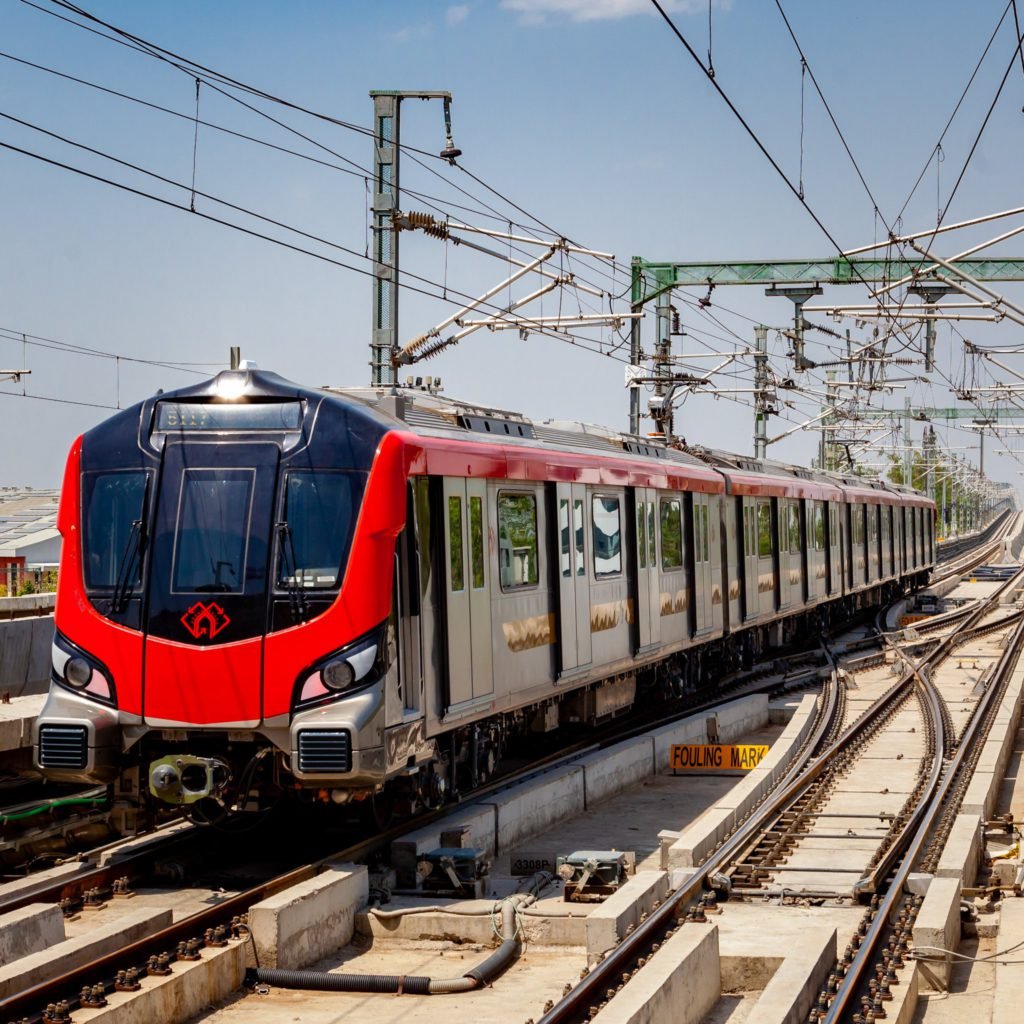
Impacts of Lucknow Metro
1. Enhanced Connectivity: With one operational corridor and another under implementation, the Lucknow Metro has improved urban connectivity across the city. By linking major residential, commercial, and transport hubs, it offers a fast, reliable alternative to road travel.
2. Reduced Traffic Congestion: The Lucknow Metro Rail Project has played a vital role in easing traffic congestion in the city. The establishment of a metro system has encouraged commuters to switch from private vehicles, which has reduced the number of private vehicles on the roads, leading to smoother traffic flow.
3. Economic Growth: The Lucknow Metro has contributed to economic growth by improving urban connectivity, generating employment, and spurring real estate development. Enhanced accessibility has supported local businesses and attracted investment in commercial infrastructure. The project created thousands of jobs during its construction phase and continues to support employment through operations and maintenance.
4. Energy Efficiency and Sustainability: The Lucknow Metro has enhanced its energy efficiency, resulting in annual savings of approximately ₹50 million and a notable reduction in harmful carbon emissions.
- By utilising a 1.32-megawatt (MW) solar power infrastructure, the system has generated nearly 8 million units of electricity since 2017. This renewable energy initiative has helped prevent the emission of around 8,000 tonnes of carbon dioxide (CO₂), underscoring the metro’s commitment to sustainable urban transport and environmental responsibility.
5. Multi-Modal Integration: The Lucknow Metro is a well-planned rapid transit system that ensures smooth connectivity through multi-modal integration. It links efficiently with city buses, autos, and e-rickshaws, offering seamless last-mile connectivity.
- Lucknow Metro was honoured with the National ‘Award of Excellence’ as the ‘Metro Rail with the Best Multi-Modal Integration’ at the Urban Mobility India (UMI) Conference 2022, conferred by the Ministry of Housing and Urban Affairs, Government of India.
6. Ridership Level: The ridership level of Lucknow Metro has shown steady growth since its inception. This consistent rise in passenger numbers has been one of the prime reasons behind the approvals of the second corridor, which further aims at enhancing connectivity and easing urban transportation in the city.
Conclusion
The Lucknow Metro stands as a transformative solution to the urban transport challenges faced by the capital city of Uttar Pradesh. Addressing issues such as traffic congestion and inadequate public transportation, the Metro system has introduced a sustainable, efficient, and modern mode of transit in the city. The North–South Corridor of the Lucknow Metro Rail Project is already operational, while the East–West Corridor is currently under implementation stages, which will further improve the connectivity in the city. The project has created numerous jobs, boosted local businesses, and encouraged more people to shift from personal vehicles to public transport. Overall, the Lucknow Metro is a much-needed step toward better urban transport and will continue to benefit the city as more routes will be added in the future.


